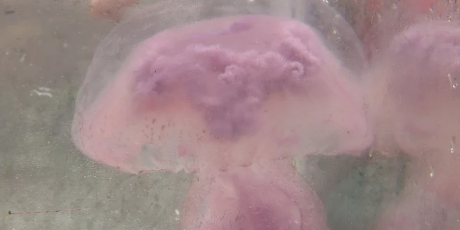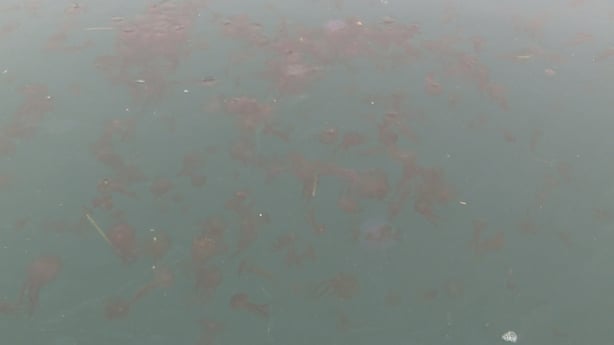Lough Hyne awash with thousands of mauve stinger jellyfish 15 Nov 2024

Ireland's only saltwater lake is awash with hundreds of thousands of mauve stinger jellyfish as swimmers are being asked to stay out of the water at the popular swimming spot to avoid being stung.
Scientists say that while the massive shoals of jellyfish in Lough Hyne in west Cork are unprecedented, it is part of a wider phenomenon this autumn with reports of jellyfish appearing all along the western seaboard from Donegal to Cork and across the southern coastline eastwards to County Waterford.
The mauve stingers (pelagia noctiluca) were first spotted in the lake last Tuesday.
Professor Rob McAllen said that he was on his way to UCC's Lough Hyne Marine Survey Research Station when he spotted what looked like rain drops falling on the water.
Given it was not raining, he went to investigate and to his utter surprise came upon the jellyfish spread out like a carpet on the lake.
"It was just a normal day on Tuesday coming over to the lab and I noticed all along the south shore what appeared to be rain. The problem was that it was bone dry and as we got closer what it was, was all the bells of the jellyfish they had completely condensed along a 150 metre stretch and it was literally the jellies hitting the surface [that looked like raindrops].

"I have never seen anything like it inside the Lough," he said.
"Normally when we see jellyfish here they are individuals and they are battered because of the ferocity of the water [at the entrance to the lake].
"So to get this number of jellyfish coming through...we think they've come through on the high tide on Monday evening and that it was pure timing that they came at the end of the flood tide when the tide is at its gentlest and they just all rolled in together."

The sheer numbers - which are estimated to run into the hundreds of thousands - could potentially impact on the zooplankton population of the lake but this will need to be studied, he said.
The lake is well known for its bioluminescent plankton or sea sparkle.
UCC/ERI's Dr Tom Doyle, one of the country's leading jellyfish specialists, says the mauve stinger is an Oceanic species and while a common sight at sea, it is very unusual to see them in Lough Hyne.
"The adults have this beautiful pink-mauve colour - very striking - but then the juveniles have this golden brown colour and then at some stage, they change. They begin to get this mauve colour.
"They have lots of really fascinating elements about them. If they have no food, they can strink down to about 80% of their own size and when the food becomes available again, they will just start growing.

"There is a coastal current that runs along the shelf edge of Ireland, and in the years that it is weak it tends to allow this influx of oceanic water inshore and with that come the oceanic species like this mauve stinger jellyfish, so we think that might be what is happening.
Swimmers urged to avoid water near jellyfish
Dr Doyle says surveys carried out on behalf of the Marine Institute from 2008 to 2018 have found that they are present in large abundances in 8 out of the 11 years but if is a first for Lough Hyne.
The advice for swimmers is to take care such is the risk of being stung.
"I definitely wouldn't recommend anyone swim anywhere near these. They are called the mauve 'stinger' so you can get a very bad sting, not as bad as the one from, say, the Portuguese man o' war. But some people can get a very bad reaction, and you can get scarring almost like a tattoo, the pigment of the jellyfish can be transferred into your arm.
"I would definitely warn swimmers to beware, especially on the south coast right now, and off Donegal with the String jellyfish, just to be careful."
The public are being asked to submit their sightings on the Big Jellyfish Hunt Facebook and to post them on the NBDC jellyfish sightings page on the Biodiversity Ireland website.